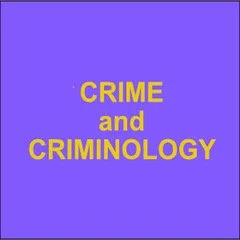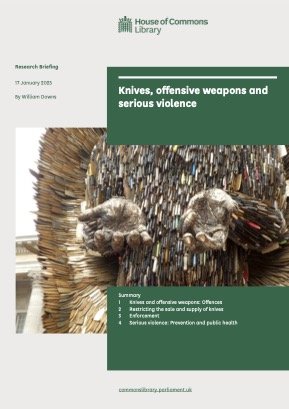By Grahame Allen, Helen Wong
Knife-related crime (knife crime) is a crime involving an object with a blade or sharp instrument. Knife crime data is published by the Office for National Statistics (ONS), government departments, police forces and the NHS. This briefing focuses on knife crime statistics for England and Wales. Some of the statistics go up to March 2024, whereas others only go up to March 2023. Further information on knife crime in England and Wales: possession offences, rules for retailers and efforts to prevent serious violence can be found in the Library briefing: Knives, offensive weapons and serious violence
Offences involving a knife The ONS publishes data on crimes recorded by police involving a knife or sharp instrument for a selection of serious violent offences. In the year ending March 2024, there were around 50,500 offences involving a sharp instrument in England and Wales (excluding Greater Manchester). This was 4.4% higher than in 2022/23 and 2.8% lower than in 2019/20.
Homicide offences In the year ending March 2023, Home Office data shows there were 244 homicides (the killing of one person by another) using a sharp instrument, including knives and broken bottles. This meant sharp instruments were used in 41% of the 594 homicides that occurred in England and Wales in 2022/23. Knife crime by police force area ONS data shows that in 2023/24, West Midlands Police recorded the highest rate of 178 offences per 100,000 population. In contrast, Dyfed-Powys Police recorded the lowest rate of 29 offences per 100,000 population. Proven offences and offenders Sentencing statistics from the Ministry of Justice show that in the year ending March 2023, there were almost 18,500 cautions and convictions made for possession of a knife or offensive weapon. Juveniles (aged 10 to 17) were the offenders in around 17.3% of cases. Hospital admissions Police and courts crime data depends on offences being reported to the authorities; this won’t capture all instances of knife crime because some offences may not be reported. It is therefore useful to supplement this information with alternative sources such as NHS hospital data. Data from NHS Digital shows there were 3,900 “hospital episodes” recorded in English hospitals in 2023/24 due to assault by a sharp object. This was a 3.3% increase compared 2022/23, and a 7% increase compared to 2014/15. Scotland and Northern Ireland The data above are for England and Wales. Data for Scotland on the number of crimes involving the possession of an article with a blade or point can be found in table A8 of the Recorded Crime in Scotland 2023-24 publication. Table 7 of Homicide in Scotland 2023-24 shows the victims of homicide by main method of killing, including those where a sharp instrument was used.
Statistics on knife crime in Northern Ireland can be found in the latest Police Recorded Crime Statistics Monthly update from the Police Service of Northern Ireland.
London: House of Commons Library, 2025. 30p.




